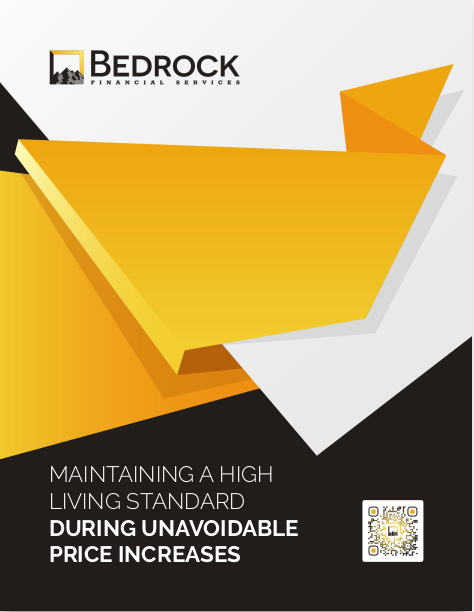Key Takeaways
-
Retirement readiness is driven more by emotional milestones than by age-based triggers. A financial professional’s job is to help clients articulate those hopes and fears clearly enough to plan around them.
-
Your retirement planning strategies should consider emotional variables such as fear of outliving savings, desire for autonomy, or legacy goals—because these are what actually motivate client behavior.
Retirement Is Not an Age Bracket—It’s a Psychological Threshold
For years, conventional thinking has pegged retirement planning to a number: age 65. Or maybe age 62. Or 67. But those numbers mean little unless they reflect what your clients are feeling. As a financial professional, you’re not really planning for retirement—you’re helping people plan for a future they both fear and long for. And the most effective plans don’t begin with actuarial tables. They begin with questions like:
-
What do you want retirement to feel like?
-
What do you worry about most as you age?
-
What does security mean to you?
Your ability to translate those emotional cues into financial strategy is what separates a decent advisor from a truly trusted one.
Why Fear Drives More Retirement Decisions Than Age
Many clients won’t say it directly, but fear is often the primary motivator:
-
Fear of running out of money.
-
Fear of becoming a burden.
-
Fear of losing relevance, identity, or control.
And these fears don’t align neatly with age. Some 45-year-olds are terrified of being broke at 70. Others are 70 and haven’t thought twice about what happens next. The conversation you initiate needs to explore what fear is shaping their financial behavior right now.
Clients who fear market volatility may overly favor cash. Clients who fear taxes may overfund insurance. Clients who fear long-term care may obsess over guarantees.
You’re there to translate fear into strategy, not soothe it with platitudes or sell them what makes you comfortable.
Hopes Are the Hidden Blueprint—Use Them
Hope is often quieter than fear—but it’s where you’ll find most of your client’s planning instincts. The desire to travel. To help grandkids. To stop working but still feel purposeful. These are emotional goals that money alone doesn’t solve. But financial planning can.
Ask directly:
-
What would you do with an extra 10 years of health?
-
If you never had to worry about money, how would you live?
-
What kind of legacy matters to you most?
When your plan reflects these aspirations, clients become far more engaged in implementing and maintaining it.
What You Should Be Asking Instead of “When Do You Want to Retire?”
The traditional question—”when do you want to retire?”—isn’t helpful without context. Replace it with these:
-
What kind of lifestyle do you want in the next 5, 10, 20 years?
-
What income streams feel most reliable to you—and why?
-
How much flexibility do you want in your later years?
These questions tap into what retirement represents emotionally and practically. You’re not just targeting an end date—you’re shaping how that stage of life should unfold.
Identify the Real Planning Milestones
Rather than segmenting retirement into ages or decades, use more client-relevant milestones:
-
Children finishing college (or returning home)
-
Downsizing a home
-
Paying off debt or a mortgage
-
Loss of a spouse or caregiving needs
-
A career pivot or partial retirement
These moments often trigger more meaningful financial shifts than turning 62 or 65. They’re also more relevant to real life. Center your planning process around these moments to build deeper trust.
Retirement Fears That Deserve Strategic Response
Here are some fears clients often don’t verbalize—but that you should be prepared for:
-
Longevity risk: Frame it not just as living longer, but as a longer period of needing autonomy and care.
-
Health-related uncertainty: Many clients are unclear on what Medicare covers—or doesn’t—and they fear catastrophic expenses.
-
Cognitive decline: Clients may fear losing the ability to manage money but avoid talking about it. Propose solutions like a financial power of attorney and structured disbursement plans.
-
Housing transitions: Downsizing or assisted living feels threatening. Offer strategies that preserve optionality.
By normalizing these fears in the conversation, you not only reduce their stigma—you give your client a proactive framework.
Hopes That Should Be Formal Planning Priorities
Clients often express their hopes vaguely, but you can reframe them as actionable goals:
-
“I want to help my grandchildren” becomes an education fund strategy or gifting plan.
-
“I want to travel” becomes a cash-flow model with discretionary spending tiers.
-
“I want to work part-time doing something I love” becomes a phased retirement timeline with lower withdrawal rates.
-
“I don’t want to be a burden” becomes a long-term care plan with integrated Medicare and personal savings buffers.
When you help clients build a retirement around what excites them, they become active stakeholders in the process.
Shift the Timeline Conversation
Instead of aiming at a fixed retirement age, start discussing planning in phases:
-
Pre-Retirement Phase (50–59): Focus on accelerating savings, reducing debt, and modeling long-term needs.
-
Transition Phase (60–67): Test lifestyle budgets, explore partial retirement or career shifts, and optimize Social Security timing.
-
Active Retirement Phase (67–75): Emphasize flexible income distribution, tax efficiency, and medical cost forecasting.
-
Legacy or Late Retirement Phase (75+): Incorporate estate planning, simplified finances, and autonomy protections.
This phased approach lets clients see retirement not as a single point, but as a living structure that evolves.
Let Clients Redefine Retirement
Many clients don’t even like the word “retirement.” It can feel like a void or the end of relevance. Ask them what they would call this phase instead:
-
“The freedom years”
-
“My next chapter”
-
“Flexible work phase”
Language matters. If retirement doesn’t sound aspirational, clients will disengage. Build a financial plan around the version of retirement they want to live—not just the one their parents lived.
Practical Steps to Emotional Retirement Planning
Here’s how to put it all together:
-
Start with a narrative, not a number. Begin planning meetings with open-ended questions about the future they want to live, not just what age they want to stop working.
-
Create visual timelines. Show clients how their finances adapt to life events—not just birthdays.
-
Design check-ins around life seasons. Set planning reviews based on actual transitions like moving, caregiving, or starting a business.
-
Document fears and hopes. Keep these as part of the client file. Use them to evaluate whether a strategy still aligns.
-
Avoid generic plans. Replace boilerplate with language that reflects the client’s own phrasing, priorities, and intentions.
You’re not just planning withdrawals and asset allocations. You’re co-authoring the story your clients want to live.
Helping Clients Think Like Retirees—Even Before They Are
One of your roles is to coach clients into a retirement mindset early. That means walking them through what it will feel like—not just what it will cost.
-
Ask them to test living on their retirement budget for 3–6 months.
-
Encourage them to downsize digitally—unsubscribe, declutter, simplify—and note what emotions come up.
-
Run simulations of financial outcomes based on key emotional triggers: what if inflation spikes? What if a spouse passes away early?
Thinking like a retiree helps them spot gaps in their plan while there’s still time to adapt.
What Matters Most to Clients in 2025
In the present landscape, clients care more about:
-
Control and flexibility over fixed guarantees.
-
Autonomy over abundance.
-
Relevance and purpose over pure relaxation.
They’re not asking how much they’ll need at 65. They’re asking whether they’ll still matter. Whether their money can keep up with their lives. Whether they’ll be safe, seen, and independent.
Your job isn’t to answer those questions with numbers. It’s to use numbers to back up better answers.
Build Plans Around the Emotional Core
If you want to retain clients long-term, align your strategy with what’s emotionally sticky—not just financially sound. Most advisors lose clients not because the math failed, but because the plan didn’t feel like it was built for the person it was supposed to serve.
You have the tools to fix that. So start asking better questions.
Design the Retirement Clients Actually Want to Live
When you plan around what your clients fear and hope for, you do more than prepare them financially—you prepare them emotionally. That’s how you become indispensable. That’s how they stop seeing you as just an advisor and start seeing you as a true partner in life planning.
If you’re looking for tools, automation, and strategic support that help you turn this client-first philosophy into a scalable business, sign up with Bedrock Financial Services. We help financial professionals like you bring personalization back into planning—without losing efficiency.







